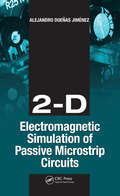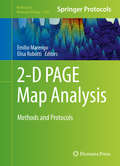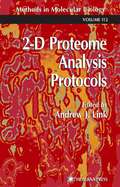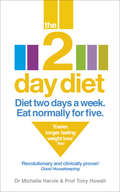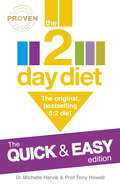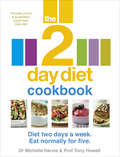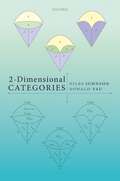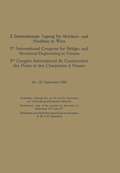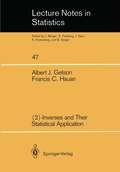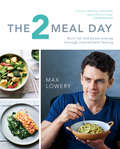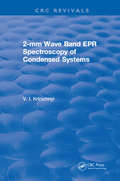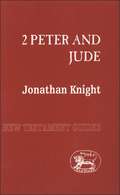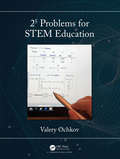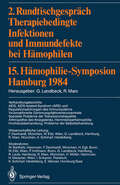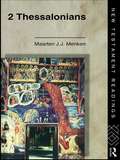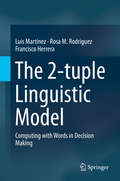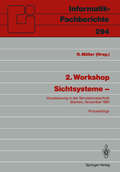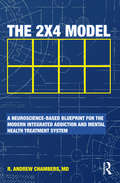- Table View
- List View
2-D Electromagnetic Simulation of Passive Microstrip Circuits
by Alejandro D. JimenezGlobal Demand for Streamlined Design and Computation The explosion of wireless communications has generated a tidal wave of interest and development in computational techniques for electromagnetic simulation as well as the design and analysis of RF and microwave circuits. Learn About Emerging Disciplines, State-of-the-Art Methods2-D Electromagnetic Simulation of Passive Microstrip Circuits describes this simple procedure in order to provide basic knowledge and practical insight into quotidian problems of microstrip passive circuits applied to microwave systems and digital technologies. The text dissects the latest emerging disciplines and methods of microwave circuit analysis, carefully balancing theory and state-of-the-art experimental concepts to elucidate the process of analyzing high-speed circuits. The author covers the newer techniques – such as the study of signal integrity within circuits, and the use of field map interpretations – employed in powerful electromagnetic simulation analysis methods. But why and how does the intrinsic two-dimensional simulation model used here reduce numerical error? Step-by-Step Simulation Provides Insight and UnderstandingThe author presents the FDTD electromagnetic simulation method, used to reproduce different microstrip test circuits, as well as an explanation of the complementary electrostatic method of moments (MoM). Each reproduces different microstrip test circuits that are physically constructed and then studied, using a natural methodological progression to facilitate understanding. This approach gives readers a solid comprehension and insight into the theory and practical applications of the microstrip scenario, with emphasis on high-speed interconnection elements.
2-D Electromagnetic Simulation of Passive Microstrip Circuits
by Alejandro D. JimenezGlobal Demand for Streamlined Design and Computation The explosion of wireless communications has generated a tidal wave of interest and development in computational techniques for electromagnetic simulation as well as the design and analysis of RF and microwave circuits. Learn About Emerging Disciplines, State-of-the-Art Methods2-D Electromagnetic Simulation of Passive Microstrip Circuits describes this simple procedure in order to provide basic knowledge and practical insight into quotidian problems of microstrip passive circuits applied to microwave systems and digital technologies. The text dissects the latest emerging disciplines and methods of microwave circuit analysis, carefully balancing theory and state-of-the-art experimental concepts to elucidate the process of analyzing high-speed circuits. The author covers the newer techniques – such as the study of signal integrity within circuits, and the use of field map interpretations – employed in powerful electromagnetic simulation analysis methods. But why and how does the intrinsic two-dimensional simulation model used here reduce numerical error? Step-by-Step Simulation Provides Insight and UnderstandingThe author presents the FDTD electromagnetic simulation method, used to reproduce different microstrip test circuits, as well as an explanation of the complementary electrostatic method of moments (MoM). Each reproduces different microstrip test circuits that are physically constructed and then studied, using a natural methodological progression to facilitate understanding. This approach gives readers a solid comprehension and insight into the theory and practical applications of the microstrip scenario, with emphasis on high-speed interconnection elements.
2-D PAGE Map Analysis: Methods and Protocols (Methods in Molecular Biology #1384)
by Emilio Marengo and Elisa RobottiExploring the 2-D gel mapping field, the chapters in this book are separated into four different categories: Part I talks about 2-D maps reproducibility and maps modeling; Part II describes the image analysis tools that provide spot volume datasets; Part III is about the statistical methods applied to spot volume datasets to identify candidate biomarkers; and Part IV discusses differential analysis from direct image analysis tools. 2-D PAGE Map Analysis: Methods and Protocols provides a unique approach to 2-D gel mapping, in that it helps users avoid drawbacks due to ignorance of the basic theoretical mechanisms underlying the technique, including data handling and proper tools for spot analysis. Written in the highly successful Methods in Molecular Biology series format, chapters include introductions to their respective topics, lists of the necessary materials, step-by-step, readily reproducible laboratory protocols, and tips on troubleshooting and avoiding known pitfalls.Cutting-edge and thorough, 2-D PAGE Map Analysis: Methods and Protocols, is a useful resource for any scientist or researcher, with a mathematical background, who is interested in 2-D gel mapping.
2-D Proteome Analysis Protocols (Methods in Molecular Biology #112)
by Andrew J. LinkWith the completion of sequencing projects and the advancement of a- lytical tools for protein identification, proteomics—the study of the expressed part of the genome—has become a major region of the burgeoning field of functional genomics. High-resolution 2-D gels can reveal virtually all p- teins present in a cell or tissue at any given time, including posttranslationally modified proteins. Changes in the expression and structure of most cellular proteins caused by differentiation or external stimuli can be displayed and eventually identified using 2-D protein gels. 2-D Proteome Analysis Protocols covers all aspects of the use of 2-D protein electrophoresis for the analysis of biological problems. The contri- tors include many of the leaders in the fields of biochemistry and analytical chemistry who were instrumental in the development of high-resolution 2-D gels, immobilized pH gradients, computer analysis, and mass spectromet- based protein identification methodologies. This book is intended as a benchtop manual and guide both for novices to 2-D gels and for those aficionados who wish to try the newer techniques. Any group using protein biochemistry—especially in the fields of molecular biology, biochemistry, microbiology, and cell biology—should find this book eminently useful. 2-D Proteome Analysis Protocols takes the researcher through the c- plete process of working with 2-D protein gels from making the protein - tract to finally identifying the proteins of interest. It includes protocols for generating 2-D protein extracts from most of the standard model organisms, including bacteria, yeast, nematode, Drosophila, plants, mouse, and human.
The 2-Day Diet: Diet Two Days a Week. Eat Normally for Five.
by Dr Michelle Harvie Professor Tony HowellThe 2-Day Diet is the original, clinically proven 5:2 diet to get you slim and healthy, as developed by acclaimed scientists Dr Michelle Harvie and Prof Tony Howell at Genesis Breast Cancer Prevention (all author proceeds go to this charity). To reach your perfect weight, all you need to do is follow this low-carb intermittent diet for two days a week. For the rest of the week just eat normally but sensibly. It really is that simple, and the science proves it: in trials followers lost more weight than those on continuous calorie-controlled diets, almost twice as much fat, and more centimetres around their waist – and they were more successful at keeping it off!The 2-Day Diet is packed with clear, safe and simple guidance, plus meal planners and 100 delicious and filling recipes to help you on your way. You'll find out how and why the diet works, and the numerous proven health benefits associated with it, including: reducing cancer risks; lowering high blood pressure; anti-ageing effects; and improving well-being, mood and energy levels. This is a unique way of eating that can completely retrain your appetite and rejuvenate your body on a cellular level. Finally, you can enjoy your food and stop worrying about your weight for good.
The 2-Day Diet: The original, bestselling 5:2 diet
by Dr Michelle Harvie Professor Tony HowellThe 2-Day Diet is the original, clinically proven intermittent diet to get you slim and healthy. Unlike other 5:2 diets, there’s no calorie counting, fasting or skipping meals. To reach your perfect weight simply follow the low-carb, low-sugar plan for two days a week, then for the rest of the week eat normally but sensibly with the help of the healthy eating guidelines. The 2-Day Diet is easy to fit around the tastes and appetites of any non-dieters in your life, such as friends and family, and all author proceeds go to Genesis Breast Cancer Prevention.In this new simplified edition, acclaimed scientists Dr Michelle Harvie and Prof Tony Howell at Genesis Breast Cancer Prevention have made it really easy to succeed on The 2-Day Diet. Expect to lose weight, twice as much fat and more centimetres around your waist than you would on a standard calorie-controlled diet. You can also benefit from the numerous other health benefits associated with this diet, including: reduced cancer risks; lowered high blood pressure; anti-ageing effects; and improved well-being, mood and energy levels.With clear, safe and simple guidance, plus meal planners and delicious recipes, this unique way of eating means you can enjoy your food and stop worrying about your weight for good.
The 2-Day Diet Cookbook: Diet Two Days A Week - Eat Normally For Five
by Dr Michelle Harvie Professor Tony HowellThe 2-Day Diet is the clinically proven 5:2 diet developed by acclaimed scientists Dr Michelle Harvie and Prof Tony Howell at Genesis Breast Cancer Prevention (all author proceeds go to this charity). Their intermittent diet has taken the nation by storm as more and more people discover the diet that really works. It’s not about counting calories, fasting or going hungry – simply follow the straightforward low-carb eating plan for two days per week then eat normally but sensibly for the other five. In this beautifully illustrated cookbook, you’ll find 65 delicious, healthy recipes for every day of the week, with ideas for both restricted and unrestricted days. On The 2-Day Diet you can enjoy filling, tasty food all day long - from breakfast through to dinner - and still lose more weight and up to twice as much fat as on a standard calorie-controlled diet. You will also benefit from a wide range of health benefits associated with the diet, such as reducing insulin and levels of other hormones and inflammation in the body known to cause cancer, lowering high blood pressure, and improving well-being, mood and energy levels. Recipes for restricted days include:- Stuffed tarragon chicken with bacon and roasted veg- Chimichurri steak- Spiced turkey burgers with guacamole- Salmon with roasted fennel, leeks and tomatoes- Blackberry frozen yoghurt- Melon, mint and pineapple granitaWith nutritionally balanced, easy-to-prepare and delicious recipes like these, along with tips, meal plans and a quick-reference guide to what to eat, The 2-Day Diet Cookbook shows you how to love food, lose weight and keep it off forever.
2-Dimensional Categories
by Niles Johnson Donald YauCategory theory emerged in the 1940s in the work of Samuel Eilenberg and Saunders Mac Lane. It describes relationships between mathematical structures. Outside of pure mathematics, category theory is an important tool in physics, computer science, linguistics, and a quickly-growing list of other sciences. This book is about 2-dimensional categories, which add an extra dimension of richness and complexity to category theory. 2-Dimensional Categories is an introduction to 2-categories and bicategories, assuming only the most elementary aspects of category theory. A review of basic category theory is followed by a systematic discussion of 2-/bicategories, pasting diagrams, lax functors, 2-/bilimits, the Duskin nerve, 2-nerve, internal adjunctions, monads in bicategories, 2-monads, biequivalences, the Bicategorical Yoneda Lemma, and the Coherence Theorem for bicategories. Grothendieck fibrations and the Grothendieck construction are discussed next, followed by tricategories, monoidal bicategories, the Gray tensor product, and double categories. Completely detailed proofs of several fundamental but hard-to-find results are presented for the first time. With exercises and plenty of motivation and explanation, this book is useful for both beginners and experts.
2. Internationale Tagung für Brücken- und Hochbau in Wien (pdf): vorläufiger Abdruck der am 24. und 25. September zur Verhandlung gelangenden Referate = 2nd International Congress for Bridge- and Structural Engineering in Vienna = 2me Congrès International de Construction des Ponts et des Charpentes à Vienne
by International Congress for Bridge and Structural EngineeringVorläufiger Abdruck der am 24. und 25. September zur Verhandlung gelangenden Referate / Preliminary copy of the reports be discussed on September 24th and 25th / Publication provisoire des rapports mis en discussion le 24 et 25 septembre
{2}-Inverses and Their Statistical Application (Lecture Notes in Statistics #47)
by Albert J. Getson Francis C. HsuanMuch of the traditional approach to linear model analysis is bound up in complex matrix expressions revolving about the usual generalized inverse. Motivated by this important role of the generalized inverse. the research summarized here began as an interest in understanding. in geometric terms. the four conditions defining the qnique Moore-Penrose Inverse. Such an investigation. it was hoped. might lead to a better understanding. and possibly a simplification of. the usual matrix expressions. Initially this research was begun by Francis Hsuan and Pat Langenberg, without knowledge of Kruskal's paper published in 1975. This oversight was perhaps fortu nate. since if they had read his paper they may not have continued their effort. A summary of this early research appears in Hsuan. Langenberg and Getson (1985). This monograph is a summary of the research on {2}-inverses continued by Al Getson. while a graduate student. in collaboration with Francis Hsuan of the Depart ment of Statistics. School of Business Administration. at Temple University. Philadelphia. The literature on generalized inverses and related topics is extensive and some of what is present here has appeared elsewhere. Generally. this literature is not presented from the point of view of {2}-inverses. We have tried to do justice to . the relevant published works and appologize for those we have either overlooked or possibly misrepresented.
The 2 Meal Day: Burn Fat And Boost Energy Through Intermittent Fasting
by Max Lowery'I love the 2 Meal Day! I feel healthy, happy and full of energy' Suki WaterhouseWelcome to intermittent fasting - eat just two meals a day, either breakfast and lunch or lunch and dinner, to burn fat and get fit fast. Rather than grazing on food all day or having to do complicated calorie calculations for the 5:2 diet, simply eat two meals to lose weight, reduce hunger and feel more energised. Choose your two meals from Max's delicious, nutritious and easy-to-prepare recipes; start the day with Salmon Mini Frittatas or a Breakfast Burrito; Lunch on Thai Green Chicken Curry or Tuna Casserole or enjoy Creamy Mushroom and Parmesan Risotto or Sea Bass Sauce Vierge for Dinner. There are even healthier desserts to satisfy your sweet tooth without over-indulging - choose from Two-Ingredient Chocolate Mousse or Banana Pancakes. Max shows how to combine your 2-meal day with High-Intensity Interval Training (HIIT) - short duration and maximum effort exercises - and resistance workouts to help you drop fat and get fit quickly. So ditch the calorie-counting and the sugar highs and lows and enjoy two meals a day alongside Max's workouts for a leaner, fitter, healthier body.
2-mm Wave Band EPR Spectroscopy of Condensed Systems
by V. I. KrinichnyiThis is the first book to summarize the problems of using modern high-resolution 2-mm wave band EPR spectroscopy in an interdisciplinary field for the investigation of various condensed systems. The material is well illustrated and the applications are as diverse as possible. The main subjects included are: unique characteristics of 2-mm EPR spectroscopy and appropriate experimental techniques, dynamics and polarity of radical microenvironment in model and biological systems, and the nature of charge carriers and charge transfer mechanisms in organic polymer semiconductors.
2-mm Wave Band EPR Spectroscopy of Condensed Systems
by V. I. KrinichnyiThis is the first book to summarize the problems of using modern high-resolution 2-mm wave band EPR spectroscopy in an interdisciplinary field for the investigation of various condensed systems. The material is well illustrated and the applications are as diverse as possible. The main subjects included are: unique characteristics of 2-mm EPR spectroscopy and appropriate experimental techniques, dynamics and polarity of radical microenvironment in model and biological systems, and the nature of charge carriers and charge transfer mechanisms in organic polymer semiconductors.
2 Peter and Jude (New Testament Guides)
by Jonathan KnightThese two small texts have often been outshone by other New Testament writings and have sometimes been regarded as of scant importance. Neither of them is easy to understand. Their language is sometimes difficult and the symbolism and biblical allusions are obscure to readers who do not know Jewish apocalyptic literature. Knight demonstrates that they do, however, repay careful study. They reveal a thought-world that is dominated by meditation on biblical literature, and they show how such material was interpreted to deal with problems in the life of certain unknown churches in the first century CE.
2⁵ Problems for STEM Education
by Valery Ochkov25 Problems for STEM Education introduces a new and emerging course for undergraduate STEM programs called Physical-Mathematical Informatics. This course corresponds with the new direction in education called STE(A)M (Science, Technology, Engineering, [Art] and Mathematics). The book focuses on undergraduate university students (and high school students), as well as the teachers of mathematics, physics, chemistry and other disciplines such as the humanities. This book is suitable for readers who have a basic understanding of mathematics and math software. Features Contains 32 interesting problems (studies) and new and unique methods of solving these physical and mathematical problems using a computer as well as new methods of teaching mathematics and physics Suitable for students in advanced high school courses and undergraduates, as well as for students studying Mathematical Education at the Master’s or PhD level One of the only books that attempts to bring together ST(E)AM techniques, computational mathematics and informatics in a single, unified format
2⁵ Problems for STEM Education
by Valery Ochkov25 Problems for STEM Education introduces a new and emerging course for undergraduate STEM programs called Physical-Mathematical Informatics. This course corresponds with the new direction in education called STE(A)M (Science, Technology, Engineering, [Art] and Mathematics). The book focuses on undergraduate university students (and high school students), as well as the teachers of mathematics, physics, chemistry and other disciplines such as the humanities. This book is suitable for readers who have a basic understanding of mathematics and math software. Features Contains 32 interesting problems (studies) and new and unique methods of solving these physical and mathematical problems using a computer as well as new methods of teaching mathematics and physics Suitable for students in advanced high school courses and undergraduates, as well as for students studying Mathematical Education at the Master’s or PhD level One of the only books that attempts to bring together ST(E)AM techniques, computational mathematics and informatics in a single, unified format
2. Rundtischgespräch Therapiebedingte Infektionen und Immundefekte bei Hämophilen: 15. Hämophilie-Symposion Hamburg 1984
2 Thessalonians (New Testament Readings)
by Maarten J.J. MenkenIn this lucid expose the second letter to the Thessalonians is approached from a historical perspective. The letter is read as part of a process of communication between its sender and the original addressees, making it accessible to the modern reader.2 Thessalonians includes a translation of the short Greek text; an historical examination of the letter's genre, authorship and religious milieu; an introduction to apocalyptic eschatology and an extensive commentary on the letter.Maarten Menken's book will appeal to theologians, ministers of religion, students of theology and all those interested in biblical studies.
2 Thessalonians: Facing The End With Sobriety (New Testament Readings)
by Maarten J.J. MenkenIn this lucid expose the second letter to the Thessalonians is approached from a historical perspective. The letter is read as part of a process of communication between its sender and the original addressees, making it accessible to the modern reader.2 Thessalonians includes a translation of the short Greek text; an historical examination of the letter's genre, authorship and religious milieu; an introduction to apocalyptic eschatology and an extensive commentary on the letter.Maarten Menken's book will appeal to theologians, ministers of religion, students of theology and all those interested in biblical studies.
The 2-tuple Linguistic Model: Computing with Words in Decision Making
by Luis Martínez Rosa M. Rodriguez Francisco HerreraThis book examines one of the more common and wide-spread methodologies to deal with uncertainty in real-world decision making problems, the computing with words paradigm, and the fuzzy linguistic approach. The 2-tuple linguistic model is the most popular methodology for computing with words (CWW), because it improves the accuracy of the linguistic computations and keeps the interpretability of the results. The authors provide a thorough review of the specialized literature in CWW and highlight the rapid growth and applicability of the 2-tuple linguistic model. They explore the foundations and methodologies for CWW in complex frameworks and extensions. The book introduces the software FLINTSTONES that provides tools for solving linguistic decision problems based on the 2-tuple linguistic model. Professionals and researchers working in the field of classification or fuzzy sets and systems will find The 2-tuple Linguistic Model: Computing with Words in Decision Making a valuable resource. Undergraduate and postdoctoral students studying computer science and statistics will also find this book a useful study guide.
2 Weeks to a Younger You: Secrets to Living Longer and Feeling Fantastic (2 Weeks Series)
by Gabriela Peacock'I love this book! Age really is just a number.' - Charlotte Tilbury'Gabriela is a game-changer, I cannot recommend her highly enough.' - Billie Piper'Backed by science and infused with years of experience, Gabriela's method in this book will change your life.' - Rosie Nixon, Hello!With SUNDAY TIMES BESTSELLING author Gabriela Peacock, looking and feeling younger has never been so easy. Gabriela reveals the game-changing science that will help you radically influence the ageing process and transform your future.Designed to be compatible with real life, 2 Weeks to a Younger You contains realistic intermittent fasting plans - scientifically proven to be the most effective method of safely reaching a healthy weight - and plenty of practical tips. As well as weight-loss, Gabriela's advice will allow you to improve sleep, increase energy and sharpen mental clarity. With 50 delicious, healthy recipes, these easy-to-follow plans are guaranteed to deliver results.
2 Weeks to Feeling Great: Because, seriously, who has the time? – THE SUNDAY TIMES BESTSELLER (2 Weeks Series)
by Gabriela Peacock'The game-changing nutritionist ripping up the weight-loss rule book.' - You Magazine'Gabriela's tips on how to achieve a great relationship with your body are all in this book!' - EVA HERZIGOVÁ'The cool-girl, real-world guide to nutrition and more. Sane, smart and funny.' - LAURA BAILEY'I had no idea feeling great was going to be this easy.' - JODIE KIDD2 Weeks to Feeling Great is nutritionist Gabriela Peacock's comprehensive guide to health and wellbeing aimed at busy people who may not have the time - or inclination - to commit to strict rules that are not compatible with real life and instead focuses on what is achievable. It includes two detailed 14-day programmes on intermittent fasting, scientifically proven to be the most effective method of safely reaching a healthy weight. Covering everything from improving sleep to rebalancing hormones and increasing energy, the easy-to-remember tips and recommendations require minimal effort but deliver significant results. Gabriela also looks at other lifestyle factors, in addition to diet, that affect health - from household and beauty products to reducing the use of plastics. The bottom line is, you don't have to be perfect in order to feel and look better.
2. Workshop Sichtsysteme —: Visualisierung in der Simulationstechnik Bremen, 18./19. November 1991 (Informatik-Fachberichte #294)
by Reinhard MöllerProceedings
The 2 x 4 Model: A Neuroscience-Based Blueprint for the Modern Integrated Addiction and Mental Health Treatment System
by Robert Andrew ChambersOver a quarter century of studies have shown that addictions, mental illnesses, and their combinations (dual diagnoses) are pervasive in the general population. Meanwhile, emerging neuroscience is revealing that the neurodevelopmental basis of major mental illness and addiction diseases are tightly interconnected and often unified pathologies of the brain. This science calls into question the profound split between the addiction and mental health fields that define our fragmented research, professional training, and treatment delivery systems—a split that leaves most patients out of reach of adequate professional expertise and evidence-based standards of care. The 2 x 4 Model, as described in this translational textbook of Addiction Psychiatry, is the essential blueprint and operational manual for the fully integrated, expertly staffed, Dual Diagnosis clinic— a clinic that is maximally capable and efficient in treating the full spectrum of addictions, mental illness, and their comorbidities, through integration of psychotherapies and medications, by one team under one roof. Replication of 2 x 4 Model Clinics into a national system would allow widespread access to excellent, transparent standards of Addiction Psychiatry as a decisive measure against mass incarceration and the exploding health care crisis of untreated addictions, all while rebuilding brain health as a core public health, social and economic imperative of modern society.
The 2 x 4 Model: A Neuroscience-Based Blueprint for the Modern Integrated Addiction and Mental Health Treatment System
by Robert Andrew ChambersOver a quarter century of studies have shown that addictions, mental illnesses, and their combinations (dual diagnoses) are pervasive in the general population. Meanwhile, emerging neuroscience is revealing that the neurodevelopmental basis of major mental illness and addiction diseases are tightly interconnected and often unified pathologies of the brain. This science calls into question the profound split between the addiction and mental health fields that define our fragmented research, professional training, and treatment delivery systems—a split that leaves most patients out of reach of adequate professional expertise and evidence-based standards of care. The 2 x 4 Model, as described in this translational textbook of Addiction Psychiatry, is the essential blueprint and operational manual for the fully integrated, expertly staffed, Dual Diagnosis clinic— a clinic that is maximally capable and efficient in treating the full spectrum of addictions, mental illness, and their comorbidities, through integration of psychotherapies and medications, by one team under one roof. Replication of 2 x 4 Model Clinics into a national system would allow widespread access to excellent, transparent standards of Addiction Psychiatry as a decisive measure against mass incarceration and the exploding health care crisis of untreated addictions, all while rebuilding brain health as a core public health, social and economic imperative of modern society.
